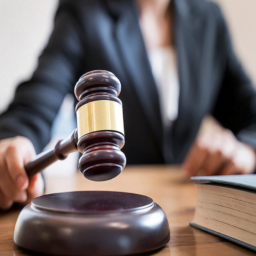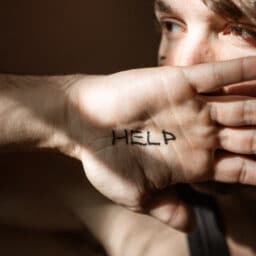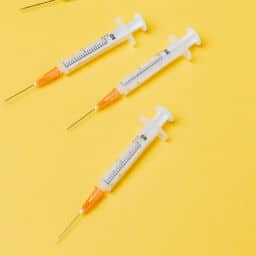INTRODUCTION
“Women in prison” has become one of the world’s fastest-growing phenomenon.[1] Bangladesh is home to a sizable number of female convicts. In contrast, women convicts are considered to be weaker because of their gender. This is a universal perception across the world. A similar situation existed in Bangladesh, yet neither the country’s scholarly literature nor its policymakers acknowledged it. Researchers have recently attempted to emphasize a sociological perspective, but very few have emphasized a legal perspective.
PRESENT SITUATION OF WOMEN PRISONERS IN BANGLADESH
In March 2021, Bangladesh had a total jail population of 83107.[2] Female convicts make up 3,222 of the total, according to Prison Population Statistics 2021.[3] 325 children under the age of six years with mothers, among them 155 are males and 170 are females.[4] According to the survey, our jails’ actual capacity for convicts is 36,614, while their actual population is nearly double.[5]
Our prisons are overcrowded, detainees are provided substandard food, and jail administration corruption is a typical occurrence in all of Bangladesh’s jails. Thus, human rights are occasionally violated in our prison.[6]
Women in jail face severe discrimination worldwide. Women are being imprisoned at an alarming rate.[7] Hence,
- The most distressing aspect of a woman’s imprisonment is her lack of desire to go. (Ain-O-Shalish Kendra, 2000)
- Regular harassment of female prisoners and the jail authorities’ demand for money from detainees are highly common behaviours within Bangladesh’s prisons. (Odhikar, 2001)
- The requirement requiring female officials to supervise female detainees is broken. As a result, they face abuse and maltreatment. (UBINIG, 2006)
Therefore, overcrowding, a lack of health and hygiene services, and substandard living conditions are the primary problems in jails. Furthermore, women prisoners experience discrimination and limited living conditions.
INTERNATIONAL STANDARDS REGARDING WOMEN PRISONERS’ RIGHTS:
All human beings are born free and equal in dignity and rights according to the Universal Declaration of Human Rights (UDHR).[8] All prisoners deprived of liberty should be treated with humanity and respect for their inherent dignity, convicts should be separated from under trial prisoners and juveniles should be separated from adults, and prisoners should be brought to trial as quickly as possible under the International Covenant on Civil and Political Rights (ICCPR).[9]
In implementing the United Nations Standard Minimum Rules for the Treatment of Prisoners, states are required to adhere to fundamental principles of life, health, and personal integrity, to provide treatment of prisoners without discrimination, and to maintain conditions conducive to prisoners’ adjustment and integration into society at large.[10] The primary purpose of prison, as prescribed by the Nelson Mandela Rules, is to provide offenders with an environment conducive to reformation.[11] In addition, the Bangkok Rules, also known as the United Nations Rules for the Treatment of Women Prisoners and Non-custodial Measures for Women Offenders[12], includes some particular provisions for women prisoners regarding newly arrived prisoners[13], women with children[14], allocation[15], individual cleanliness, medical screening[16], gender-specific health care[17], mental health care[18], HIV prevention, treatment and support, safety and security, contact to the outside world[19], institutional personnel and training, pregnant women, breastfeeding mothers and mothers with children in prison, etc.
RULES AND REGULATIONS IN BANGLADESH ON WOMEN PRISONERS’ RIGHTS
To regulate the management of jail establishments, confinement, and treatment of the prisoners, the Bengal Jail Code[20] which is currently in force in Bangladesh, also heavily draws on provisions of several other Acts, including the Prisons Act[21], the Prisoners Act[22], the Identification of Prisoners Act[23], the Special Benefit for Women Convicted in Prisons Act[24].
- The Constitution of Bangladesh
According to Bangladesh’s Constitution, all citizens enjoy equality before the law and equal protection under the law.[25] This is why the rights of women prisoners are no less important than those of women in general. The Fundamental Rights for a human enumerated in Part III of the Constitution[26] are applicable for prisoners. Moreover, Article 35 for protection in respect of trial and punishment is also applied in this regard.[27]
- The Special Benefit for Women Convicted in Prisons Act 2006
Under this Act[28], a prisoner convicted for more than one year shall be entitled to special benefits after serving 50% of the sentence, including concessions. Conditional release of any prisoner[29], aftercare services by the Department of Social Services for the social rehabilitation of a few who have been trained in various trade courses while incarcerated[30], vocational training such as block or batik, embroidery, haircutting, bamboo and cane work, tailoring science, fabric making, etc[31] will be considered as special benefits for women prisoners.
- The Bengal Jail Code 1864
The Bengal Jail Code requires compliance with the Civil Procedure Code[32], the Criminal Procedure Code[33], and the Penal Code[34], all of which govern the incarceration of inmates, the execution of penalties, and prisoners’ appeals, respectively.[35]
- The Prisons Act 1894
The Act is primarily concerned with providing adequate facilities for inmates, segregating quarters for different types of convicts, providing jobs for prisoners, and providing medical care for prisoners.[36] The Act requires female convicts to be imprisoned in separate buildings or separated parts of a building, so they cannot be nearsighted by male convicts, speak with them, or have sexual relations with them.[37] The Act makes provisions for civil and unconvinced criminals’ food, clothing, and bedding.[38] Concerning healthcare, the Act states that in the event of a prisoner’s illness, the Jailer shall immediately summon the Medical Subordinate’s attention to any prisoners desiring to see him, who are ill, or whose state of mind or body looks to require attention.[39] Additionally, the act states that a hospital or other suitable location should be provided for the convicts.[40]
- The Prisoners Act 1900
Reformative School is mentioned twice in this Act.[41] According to Part IV of this act, if the Government finds out that any prisoner is lunatic or unsound-minded, it may order his removal to a lunatic asylum.[42] All people in lunatic asylums must comply with the provisions of the Lunacy Act[43].
- The Identification of Prisoners Act 1920
Under this Act, a police officer may be ordered to measure or photograph a person by a first-class magistrate to conduct an investigation or proceed under the Criminal Procedure Code in the case of a prisoner previously arrested in connection with an investigation or proceeding.[44] The statute further provides that photographs and measurements taken of an under-trial prisoner are destroyed following his release or acquittal unless he was previously convicted of an offence punishable by a sentence of at least one year of hard labour.[45] This provision would help a prisoner, especially a woman, to live in society further with privacy and dignity.
CONCLUDING REMARKS
To conclude, pursuing a rights-based claim can help women prisoners follow the law by reaffirming their nationality.[46] Following the debate above, it is evident that Bangladesh has a variety of legislations dealing with prisoners’ rights that do not adhere to international standards. As a prisoner, female inmates have some gender-specific rights. However, they are denied such fundamental rights. We should consider including those rights in our legislation and ensuring their protection.
Author(s) Name: Md. Shawkat Alam Faisal (University of Rajshahi, Bangladesh)
References:
[1] Wendy Sawyer, ‘The Gender Divide: Tracking Women’s State Prison Growth’, The Prison Policy Initiative <https://www.prisonpolicy.org/reports/women_overtime.html> accessed on 9 October, 2021.
[2] ‘Bangladesh | World Prison Brief’ <https://www.prisonstudies.org/country/bangladesh> accessed 30 August 2021.
[3] ‘Present Situation in Bangladesh Prison System | The Lawyers & Jurists’ <https://www.lawyersnjurists.com/article/present-situation-in-bangladesh-prison-system/> accessed 30 August 2021.
[4] Prison Population Statistics 2021, Bangladesh Jail (March 2021) <https://prison.gov.bd/prisonsite/assets/userfiles/files/Prison%20Statistes%202%21.pdf> accessed on 9 October, 2021.
[5] United Nations Rules for the Treatment of Women Prisoners and Non-custodial Measures for Women Offenders (The Bangkok Rules) <https://www.unodc.org/documents/justice-and-prison-reform/Bangkok_Rules_ENG_22032015.pdf> accessed on 9 October, 2021.
[6] M. Anwarul Aziz Kanak and Mohammad Mizanur Rahman Chowdhury, ‘The Present Rights of Prisoners in Bangladesh: Disparity Between Law and Practice’, The international Journal of Social sciences (VOL.20 No.1, February 2014), p7.
[7] Tahsina Akhter, ‘Women Prisoners in Bangladesh: Some Sociological Insights for Reform’ (International Conference on Social Sciences and Humanities, September 2014), p13.
[8] Universal Declaration of Human Rights, art 1.
[9] International Covenant on Civil and Political Rights, art 10.
[10] United Nations Standard Minimum Rules for the Treatment of Prisoners (the Nelson Mandela Rules) <https://www.unodc.org/pdf/criminal_justice/UN_Standard_Minimum_Rules_for_the_Treatment_of_Prisoners.pdf> accessed 31 August 2021.
[11] Ibid, rule 4.
[12] United Nations Rules for the Treatment of Women Prisoners and Non-custodial Measures for Women Offenders (The Bangkok Rules) <https://www.unodc.org/documents/justice-and-prison-reform/Bangkok_Rules_ENG_22032015.pdf> accessed on 1 October, 2021.
[13] Ibid, clause 1, 2.
[14] Ibid.
[15] Ibid, clause 4, rule 4.
[16] Ibid, rule 6.
[17] Ibid, rule 10, 11.
[18] Ibid, rule 12.
[19] Ibid, rule 8.
[20] Bengal Jail Code 1864.
[21] Prisons Act 1894.
[22] Prisoners Act 1900.
[23] Identification of Prisoners Act 1920.
[24] Special Benefit for Women Convicted in Prisons Act 2006.
[25] The Constitution of Bangladesh, art 27.
[26] Ibid, art 26-47.
[27] Ibid, art 35.
[28] Special Benefit for Women Convicted in Prisons Act 2006, s 4.
[29] Ibid, s 3(a).
[30] Ibid, s 3(c).
[31] Ibid, s 3(b).
[32] Code of Civil Procedure 1908.
[33] Code of Criminal Procedure 1898.
[34] Penal Code 1860.
[35] AMM Shawkat Ali, Jail Administration <http://www.banglapedia.org/HT/J_0031.html> access 14 July 2021.
[36] Prisons Act 1894, ss 4, 7, 13, 27-39.
[37] Ibid, s 27.
[38] Ibid, s 31-33.
[39] Ibid, s 37.
[40] Ibid, s 38.
[41] Prisoners Act 1900, ss 14, 28.
[42] Ibid, s 30.
[43] Lunacy Act 1912.
[44] Identification of Prisoners Act 1920, s 4.
[45] Ibid, s 5.
[46] Susan Easton, ‘Constructing Citizenship: Making Room for Prisoners’ Rights’ (2008) 30(2), Journal of Social
Welfare & Family Law, p142.
















